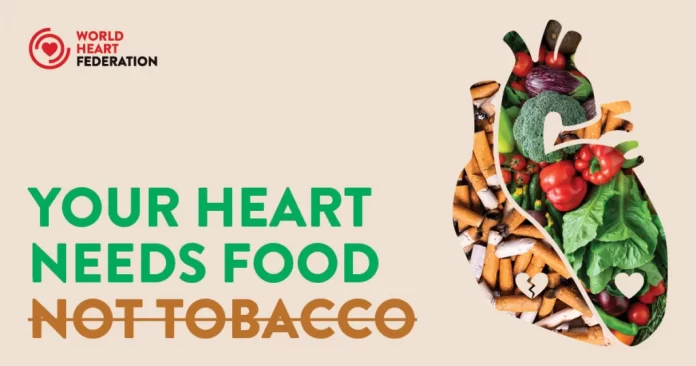Introduction:
For a very long time, it has been understood that tlogobacco poses a serious hazard to human health, with dire repercussions for both smokers and those who are exposed to secondhand smoke. By stressing the significance of quitting smoking and encouraging a smoke-free lifestyle, we hope to raise awareness of the harmful consequences of tobacco via this b. Join us as we explore the world of tobacco and its profound effects on our health.
The Dangers of Smoking
There are many risks associated with tobacco use for one’s physical and mental health. First and foremost, tobacco contains a variety of carcinogens, tar, carbon monoxide, nicotine, and other hazardous substances. These toxins wreck havoc on the respiratory system, putting people at higher risk for respiratory illnesses like chronic obstructive pulmonary disease (COPD), lung cancer, and others. Additionally, smoking is a major risk factor for cardiovascular conditions like heart attacks, strokes, and high blood pressure.
Secondhand Smoke: The Silent Killer
Non-smokers who are exposed to secondhand smoke are at danger in addition to smokers. More than 7,000 compounds, including at least 70 recognised carcinogens, are found in secondhand smoking. Children and infants are especially at risk because secondhand smoke exposure increases the risk of respiratory infections, asthma, ear infections, and sudden infant death syndrome (SIDS). To preserve the health of smokers and non-smokers, it is essential to establish smoke-free settings.
The Power of Quitting
One of the most important actions someone can take to enhance their health is to stop smoking. Despite the fact that nicotine is addictive, countless success stories show that quitting is achievable with willpower and encouragement. The body begins to heal shortly after stopping, and over time, there is a significant reduction in the chance of contracting diseases linked to smoking. The likelihood of success can be significantly increased by adopting nicotine replacement treatment, enrolling in smoking cessation programmes, and developing a solid support network.
Supporting Tobacco-Free Initiatives
Communities, healthcare facilities, and governments all have a significant impact on the promotion of tobacco-free living. Strict tobacco control measures, such as increased charges on tobacco products, gruesome warning labels, and all-encompassing bans on smoking in public areas, have been shown to be effective in lowering smoking rates. Campaigns for education that target both children and adults can raise awareness of the risks associated with tobacco use and provide people the power to make wise decisions.
Lesser-Known Health Impacts of Tobacco
In addition to the well-known hazards, tobacco smoking includes a number of less well-known but nevertheless grave health effects. Smoking, for instance, has been associated with a higher chance of getting a number of cancers, including those of the mouth, throat, oesophagus, pancreas, bladder, kidney, cervix, and stomach. Additionally, smoking has been linked to decreased fertility in both men and women, making it more difficult for couples to get pregnant.
Oral health is negatively impacted by tobacco use. Smoking damages teeth, gives you poor breath, and raises your chance of developing gum disease and losing teeth. It can affect taste and scent, making it harder to appreciate meals and drinks overall.
Smoking also has the ability to hasten ageing. Collagen and elastin are harmed by the chemicals in cigarette smoking, which causes early wrinkles, sagging skin, and a dull complexion. Long-term smokers frequently show obvious indicators of accelerated ageing, which can have a detrimental effect on one’s self-esteem and perception of one’s physique.
Emerging Trends and Alternatives
Alternative nicotine products have grown in popularity as viable substitutes for traditional tobacco cigarettes in recent years. Among the most popular substitutes are heated tobacco products and electronic cigarettes (or “e-cigarettes”). Although these goods could appear like useful tools for harm reduction, it is important to approach them with caution.
These alternatives’ safety and effectiveness are still up for debate, and research on their long-term health impacts is still being conducted. E-cigarettes may still carry health hazards, such as lung damage and nicotine addiction, according to some research, while others contend that they may be a less dangerous alternative for adult smokers who are unable to give up regular cigarettes.
It is important to remember that these substitutes do not come without risks, and their popularity among non-smokers, especially teenagers, is alarming. Concerns about a new generation becoming hooked to nicotine have been expressed due to the alluring flavours and marketing strategies employed to promote these products.
Conclusion
The use of tobacco has significant negative effects on both individual and societal health. While smoking has many negative health effects that are less well-known, such as a higher risk of cancer, problems with fertility, and accelerated ageing, it is still important to educate people about these effects. In addition, it is essential to approach emerging trends and alternatives cautiously and prioritise thorough investigation as they continue to evolve.
Stricter tobacco control laws, easily accessible cessation programmes, and effective education efforts are just a few of the many strategies that must be used to battle the tobacco epidemic. Together, as individuals, groups, and institutions of government, we can build a healthy future free from tobacco’s harmful impacts.





























